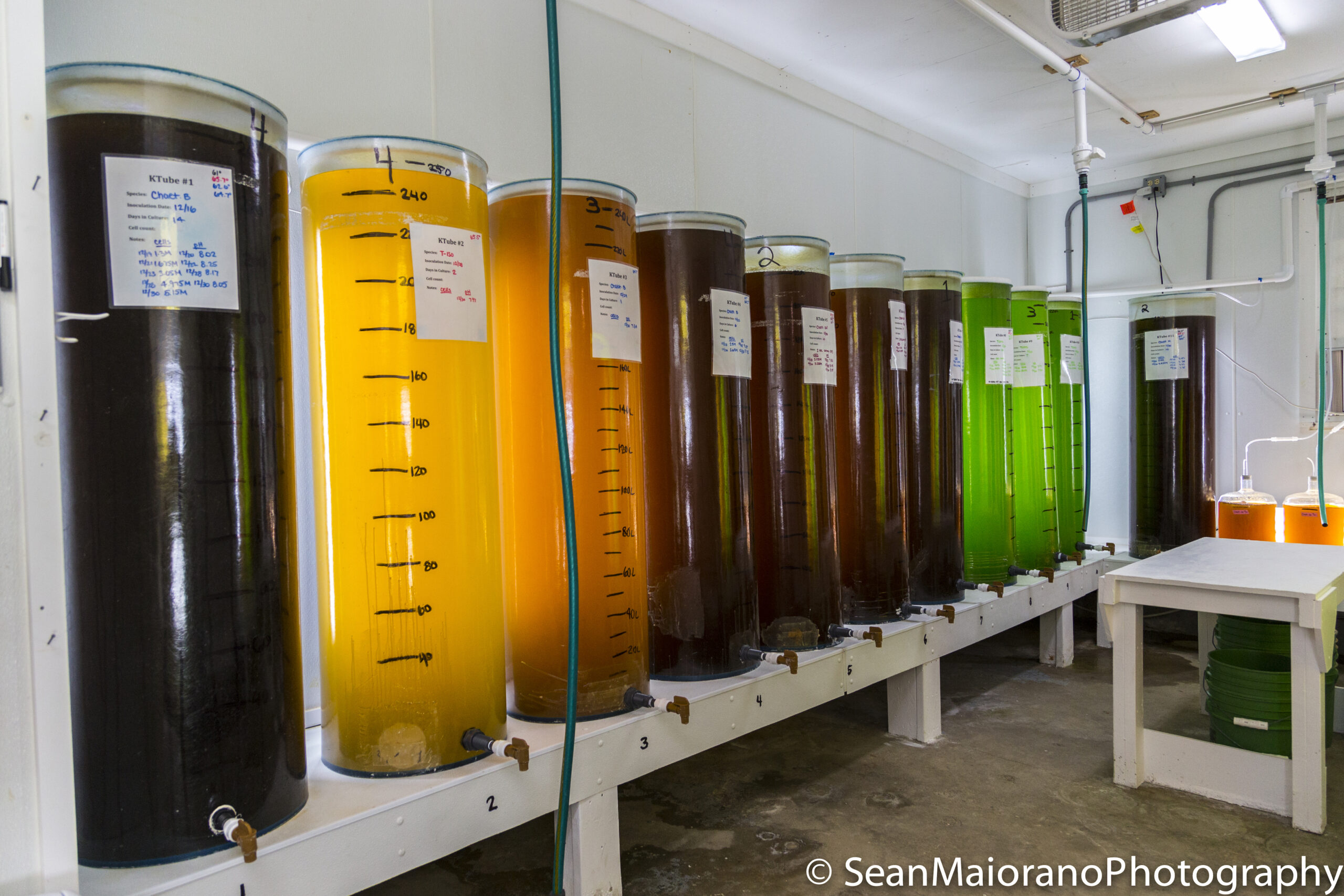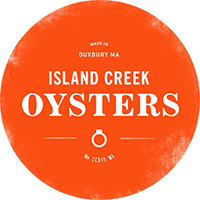Generally, the winter is a quieter time for oyster farmers. The bay is emptied of its moorings, boats and oyster plexes. The shoreline is tucked in with a blanket of frost. It’s a time for tinkering, repairing, power washing, and reorganizing. Beneath this sleepy facade, however, brews a squall of activity and energy.
Aside from the continuous harvesting and terrestrial puddering, the winter is high season in our hatchery. This is the time of year when we start creating our source of baby oysters (AKA seed) that we will harvest and then sell to restaurants in 2 years!
The ladies who run our entire hatchery operation have their work cut out for them in the next coming months! Soon, their hands will be full with oyster babies whose hardiness will determine whether or not our farm will be successful in the years to come. No pressure, ladies.
Want to learn more? Get ready for some serious science!
EARLY WINTER: HATCHERY + ALGAE
HATCHERY
A hatchery is a controlled setting where adult oysters reproduce and algae are grown. In a hatchery, we attempt to recreate conditions in which oysters spawn in the wild.
When stepping foot into a shellfish hatchery, prepare yourself for a TON of science. Housed in a dusty laboratory on the harbor, our hatchery is a mad scientist’s wet dream of test tubes, grow lights, microscopes, and lots of trial and error.
Island Creek is one of a handful of farms with our own hatchery. This allows us to have as much control over the final product as possible! By having control over this process, we determine the volume of seed we produce. Our farm crew also gets to decide what gets put into the marketplace and can grow oysters that have the specific traits a chef wants.
The first step is to clean and repair equipment in the hatchery that has been collecting dust all summer and fall.
ALGAE
Oysters are filter feeders and have two valves- one draws in water allowing them to eat, and the other pumps purified water out (which is the reason why oysters are so good for the environment. A topic for another time). Oyster seed when first spawned are microscopic, so their food needs to be small enough for them to filter. We grow 6-8 varieties of algae, selected from oceans all over the world based off of their size and nutrient content. Just like with humans, baby oysters require a different cocktail of nutrients throughout their lifecycle (ie. breastmilk vs. bourbon).
Before we even touch an oyster, we must first grow algae to feed them with. When we spawn oysters it’s on the scale of hundreds of millions, so we’re constantly producing enough food for them. This process begins in early in the winter so we have enough algae ready for the first spawn.
January has just begun which means there’s much more to come in the seed production process. Stay tuned throughout our team’s busy season for more updates!



